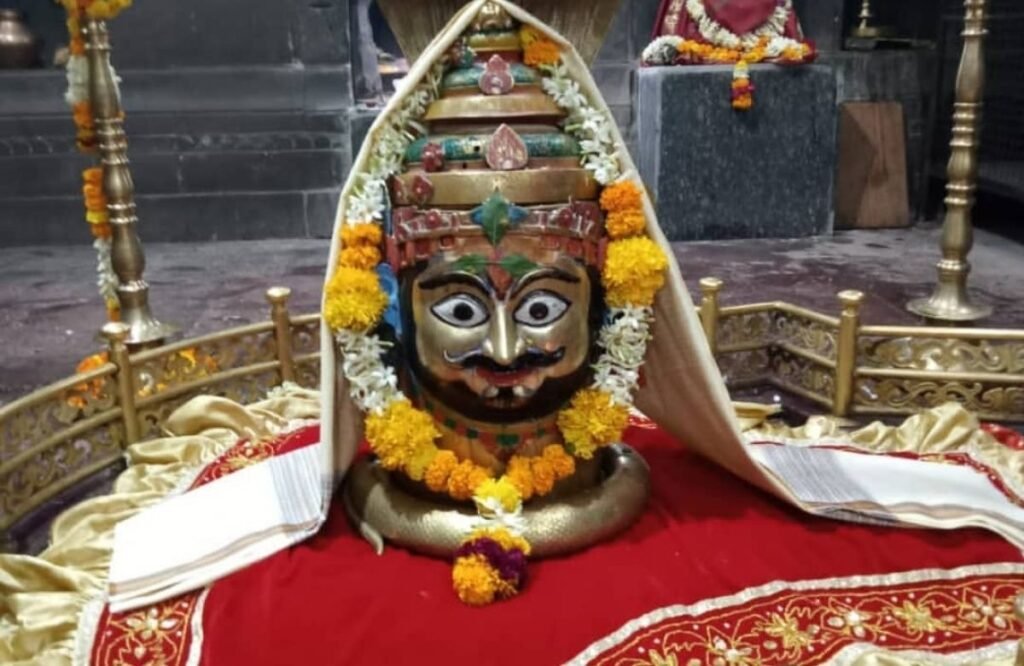How Many Jyotirlingas in India? India, a land rich in spiritual heritage, is home to sacred places that hold immense significance in Hinduism. Among these, the Jyotirlingas are revered as powerful manifestations of Lord Shiva. In this article, we unravel the mystical question: “How many Jyotirlingas are there in India?”
There are 12 Jyotirlingas in India.
- The 12 Jyotirlingas bear immense importance in Hinduism, serving as revered pilgrimage sites dedicated to Lord Shiva. Pilgrims believe that paying homage to these sacred locations and offering prayers brings spiritual blessings and divine grace.
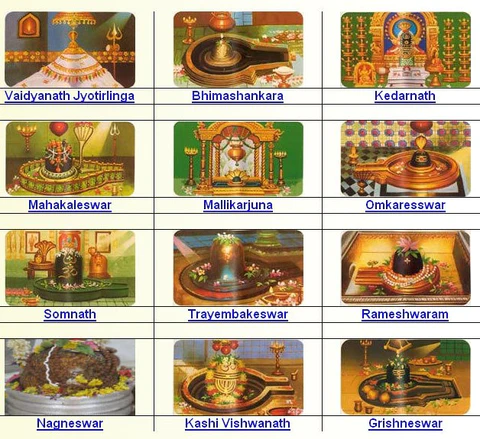
| Section | Details |
|---|---|
| Introduction | Summary of the Jyotirlingas, their significance in Hinduism, and their association with Lord Shiva. |
| Total Number of Jyotirlingas | This number has been mentioned to be 12 in India, all of which represent a different manifestation of Lord Shiva. |
| Places | Lists the places of 12 Jyotirlingas across different states in India. |
| Spiritual Significance | Explains the religious and spiritual significance of visits to these shrines. |
| Conclusion | Inspires pilgrimage to the Jyotirlingas, to seek spiritual growth and union with divine energy. |
12 Jyotirlinga map

The Essence of Jyotirlingas:
Jyotirlinga, often referred to as the “Lingas of Light,” symbolize the endless cosmic power of Lord Shiva. These sacred shrines are distributed across the length and breadth of India, each embodying a unique divine energy.
The Sacred Count:
1. Somnath, Gujarat:
Revered as the first Jyotirlinga, Somnath in Gujarat is a pilgrimage site steeped in history and spirituality. The temple stands as a testimony to the resilience of faith through centuries.
The Somnath temple, also known as Deo Patan, is a sacred Hindu shrine situated in Prabhas Patan, Veraval, Gujarat, India, holding great historical and religious significance. It is one of the twelve Jyotirlingas, representing Lord Shiva’s divine presence.
| LOCATION | COORDINATES |
| Prabhas Patan, Veraval, Saurashtra, Gujarat | Latitude: 20.9375° N, Longitude: 70.4090° E |
| Distance from Ahmedabad | 400 km (249 mi) southwest |
| Distance from Junagadh | 82 km (51 mi) south |
| Proximity to Veraval Railway Junction | 7 km (4 mi) southeast |
| Distance from Porbandar Airport | 130 km (81 mi) southeast |
| Distance from Diu Airport | 85 km (53 mi) west |
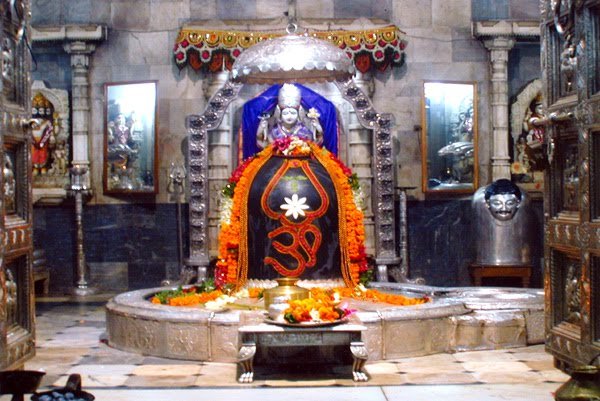
2. Mallikarjuna, Andhra Pradesh:
Nestled in the sacred hills of Srisailam, Mallikarjuna Jyotirlinga is a fusion of divinity and natural beauty. Pilgrims embark on a spiritual journey to seek the blessings of Lord Shiva.
When Shiva and Parvati sought brides for their sons, Ganesha was wed to Buddhi (intellect), Siddhi (spiritual power), and Riddhi (prosperity). Enraged, Kartikeya went to Mount Krauncha in Palani, adopting the name Kumara brahmachari. Despite initially moving away, Kartikeya stayed nearby at the request of the Devas, and the place where Shiva and Parvati resided became known as Srisailam.
| LOCATION | COORDINATES |
| Distance from Kurnool District Headquarters | 180 km |
| Distance from Hyderabad | 213 km |
| Nearest Railway Stations | Markapur (2 hours by road) |
| Tarlupadu (2.5 hours by road) | |
| Proximity to Giddalur Railway Station | 139 km (on the Kacheguda-Guntur route) |

3. Mahakaleshwar, Madhya Pradesh:
The ancient city of Ujjain is home to Mahakaleshwar Jyotirlinga, where the divine presence of Lord Shiva is believed to reside in its purest form. The temple’s unique rituals add to its spiritual allure.
The Mahakaleshwar idol, a Dakshinamukhi representation facing south, is a distinctive feature exclusive to Mahakaleshwar among the 12 Jyotirlingas, following the tantric shivnetra tradition. Above the Mahakal shrine, the Omkareshwar Mahadev idol is enshrined, while images of Ganesh, Parvati, and Karttikeya are positioned in the west, north, and east, respectively. Nandi, Shiva’s vehicle, is located to the south of the sanctum sanctorum.
| Temple Information | |
| Location | Ujjain, Madhya Pradesh, India |
| Nearest Airport | Nearest Airport |
| Nearest Railway Station | Ujjain Junction |
| Description | Mahakaleshwar Jyotirlinga is a sacred Hindu temple dedicated to Lord Shiva, situated in Ujjain. Devotees can easily access the temple via Indore Airport for air travel and Ujjain Junction for rail transport. Pilgrims visit from far and wide to seek the blessings of Lord Shiva at this revered destination. |
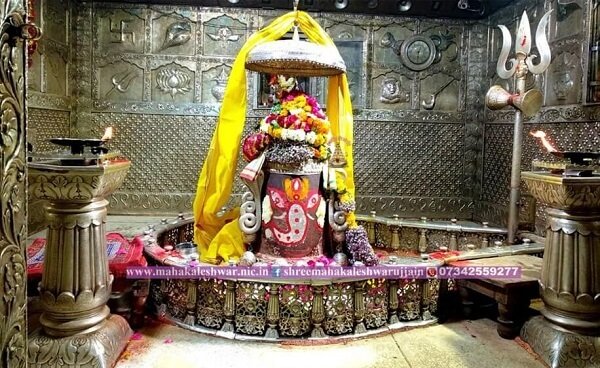
4. Omkareshwar, Madhya Pradesh:
Situated on the serene island of Mandhata in the Narmada River, Omkareshwar Jyotirlinga offers a tranquil setting for devotees seeking spiritual solace.
According to the Shiv Mahapuran, a dispute arose between Brahma, the Hindu God of creation, and Vishnu, the God of Protection, regarding their supremacy in creation. To settle the argument, Shiva manifested as an endless pillar of light, the jyotirlinga, piercing through the three worlds. Brahma falsely claimed to have reached the end, while Vishnu acknowledged defeat. Shiva then emerged as a second pillar of light and cursed Brahma, denying him a place in ceremonies, while decreeing perpetual worship for Vishnu until the end of eternity.
| Temple Information | |
| Location | Mandhata city (Omkareshwar), Khandwa district, Madhya Pradesh, India |
| Distance from Barwaha | Approximately 16 km |
| Geographical Features | Situated on Mandhata or Shivpuri island on the banks of the Narmada and Kaveri rivers |
| Island Details | 4 km long, 2.6 km² in area, accessible by boats and bridge |
| Connectivity | Nearest Airport: Indore |
| Nearest Railway Stations: Khandwa Junction and Mhow | |
| Additional Note | Omkareshwar is formed by the sacred Narmada River, known for housing one of the world’s largest solar power plants. |
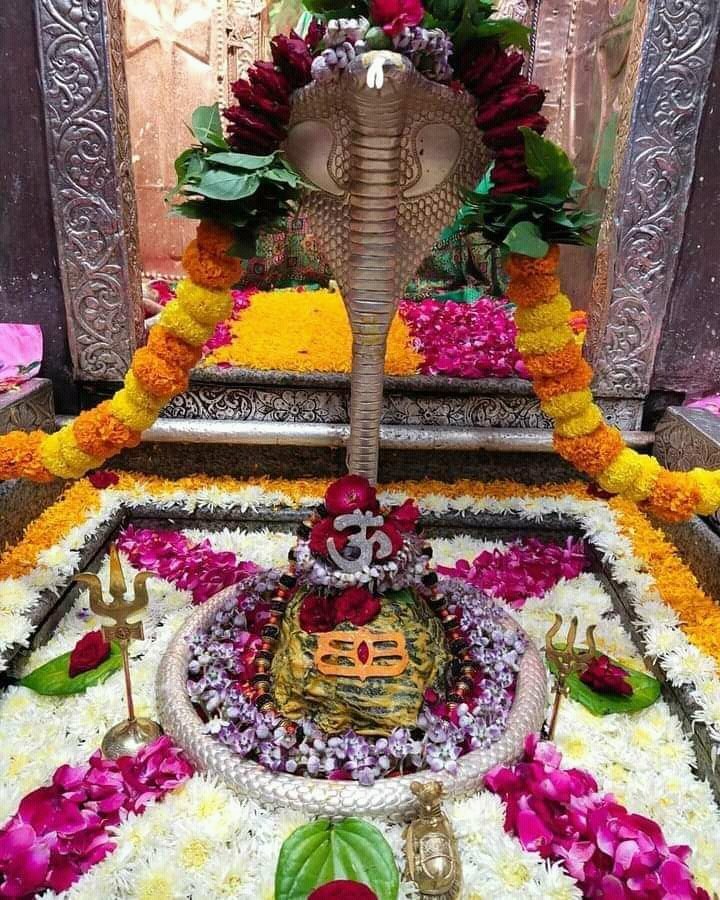
5. Mamleshwar, Madhya Pradesh
Mamleshwar is a village located near Pune, Maharashtra, India. It is famous for its Jyotirlinga, which is a temple dedicated to the Hindu god Lord Shiva. The temple is believed to be one of the 12 Jyotirlingas in India and is considered a major pilgrimage site for both Hindus and Sikhs. The temple was founded in the 14th century and is located on the banks of the Narmada River. It is known for its beautiful architecture and intricate carvings.
Mamleshwar (Amaleshwar) (whose name means “Immortal Lord” or “lord of the Immortals or Devas”) located on the southern bank of the Narmada River on the mainland.
Omkareshwar and Mamaleshwar represent two forms of the same Jyotirlinga. Mamaleshwar is situated on the south bank of the Narmada, while Omkareshwar Jyotirlinga is located on Omkar Parvat on the north bank, with the sacred Narmada River flowing between them.
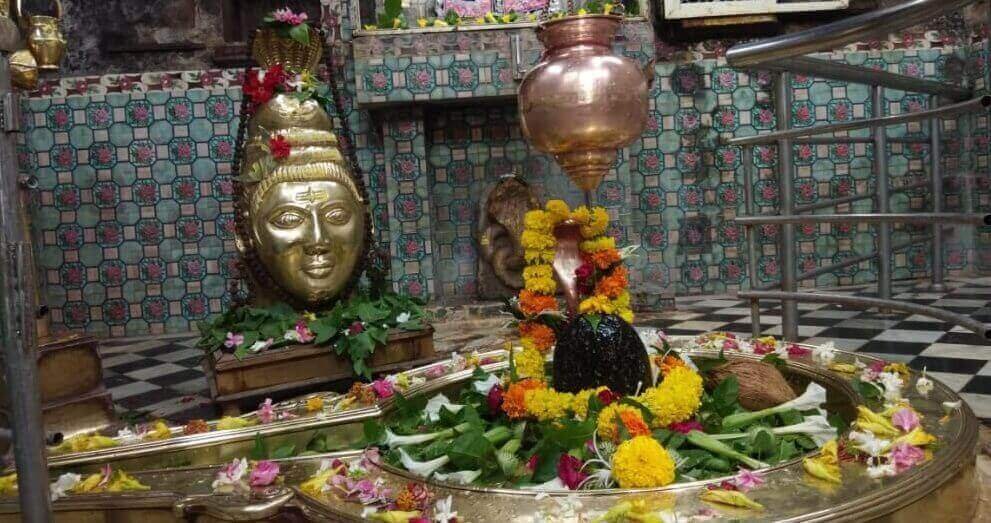
6. Kedarnath, Uttarakhand:
Nestled in the majestic Himalayas, Kedarnath Jyotirlinga is a symbol of Lord Shiva’s omnipresence. Pilgrims brave challenging terrain to experience the divine energy of this sacred abode.
- The main deity of Kedarnath is a lingam, characterized by an irregular shape, resting on a pedestal measuring 3.6 meters (12 feet) in circumference and height.
- In front of the temple, a small pillared hall features images of Parvati and the five Pandava princes, adding to the sacred ambiance of the site.
- Surrounding Kedarnath are four additional temples – Tungnath, Rudranath, Madhyamaheshwar, and Kalpeshwar – collectively forming the Panch Kedar pilgrimage destinations.
- Inside Kedarnath Temple’s first hall, statues of the five Pandava brothers, Krishna, Nandi (Shiva’s vehicle), and Virabhadra (one of Shiva’s guards) are enshrined.
- The main hall also houses statues of Draupadi and various other deities, contributing to the rich mythological and cultural significance of the temple.
- An intriguing feature of the temple is a triangular stone lingam with the carved head of a man, a unique aspect also found in a nearby temple commemorating the marriage of Shiva and Parvati.
- Adi Shankara, a revered saint, is credited with reviving Kedarnath and other Uttarakhand temples; a samādhi mandir dedicated to him is located behind the main temple.
- Kedarnath holds a special place in Hindu pilgrimage, not only for its spiritual importance but also as part of the Panch Kedar circuit, embodying the cultural and religious heritage of the region.
| Temple Information | |
| Location | Garhwal Himalayan range, near the Mandakini river, Uttarakhand, India |
| Accessibility | The temple is not directly accessible by road; a 22 km (14 mi) uphill trek from Gaurikund is required for reaching Kedarnath. |
| Opening Months | April (Akshaya Tritiya) to November (Kartik Purnima, autumn full moon) |
| Winter Rituals | During winter, the temple deity is moved to Ukhimath for worship, and the temple remains closed to the public due to extreme weather conditions. |
| Cultural Significance | Kedarnath is considered a homogeneous form of Shiva, known as the ‘Lord of Kedarkhand,’ reflecting the historical name of the region. |
| Seasonal Schedule | Open for general public visitation during the specified months, providing a window for pilgrims to pay their respects to Lord Shiva. |
| Pilgrimage Tradition | Pilgrims embark on a challenging 22 km trek from Gaurikund to reach the sacred Kedarnath Temple, contributing to the spiritual experience. |
| Weather Considerations | Extreme weather conditions in the region necessitate the limited operational period, emphasizing the significance of the pilgrimage season. |
| Connectivity Information | |
| Nearest Airport | Dehradun Airport |
| Airport Location | Located in Dehradun, Uttarakhand, India |
| Approximate Distance to Temple | Distance from Dehradun Airport to Kedarnath Temple needs additional ground transportation, typically by road. |
| Nearest Railway Station | Rishikesh Railway Station |
| Station Location | Located in Rishikesh, Uttarakhand, India |
| Approximate Distance to Temple | Distance from Rishikesh Railway Station to Kedarnath Temple requires additional ground transportation, usually by road and trekking. |
| Transportation Options | Ground transportation, including road travel and trekking, is necessary to reach Kedarnath Temple from both the nearest airport and railway station. |
| Travel Considerations | Due to the remote location of Kedarnath, the last leg of the journey involves trekking, adding a unique pilgrimage experience. |
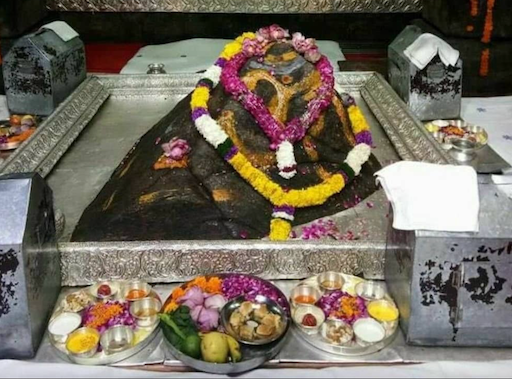
7. Bhimashankar, Maharashtra:
Surrounded by lush greenery in the Sahyadri Range, Bhimashankar Jyotirlinga is known for its unique form representing Lord Shiva’s primal energy, ‘Ardhanarishwara.’
- Saintly Visits: According to Namdev, a medieval saint, both Saint Jnaneshwar and Namdev himself visited Bhimashankar after their pilgrimage to Tryambakeshwar, emphasizing the sacredness of the site
- Architectural Style: The Bhimashankar Temple is constructed in the Nagara style, seamlessly blending traditional and modern architectural elements, creating a unique and visually appealing structure.
- Temple Hall Construction: Nana Phadnavis of the Peshwa dynasty built the temple hall, a significant component, during the 18th century, contributing to the historical and cultural heritage of the temple.
- Gopura-shikhara: Nāna Phadnavis also played a role in the construction of the Gopura-shikhara of the temple, adding to its grandeur and architectural magnificence.
- Royal Contributions: King Shivaji generously granted the village of Kharosi to the temple, demonstrating royal patronage, and Chimaji Appa, the brother of Bajirao I, made a notable donation in the form of a large bell, prominently displayed in front of the temple.
| Temple Information | |
| Name | Bhimashankar Mandir (also known as Bhimashankar or Bhimashankar Jyotirlinga) |
| Location | Bhimashankar village, Pune district, Maharashtra, India |
| Taluka and Forest Range | Khed taluka, Bhimashankar forest range |
| River Origin | The Bhima River originates from the Bhimashankar village |
| Hills and Rock Carvings | The hills near Manmad village, in proximity, feature old rock carvings depicting the deities Bhimashankar, Bhootings, and Amba-Ambika. |
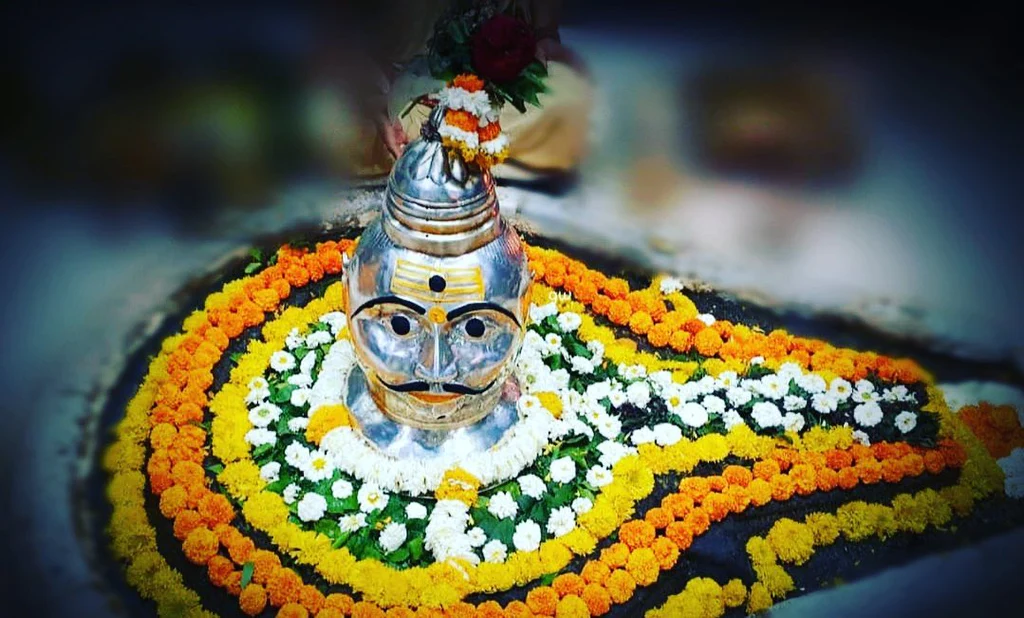
8. Kashi Vishwanath, Uttar Pradesh:
Located in the ancient city of Varanasi, Kashi Vishwanath Jyotirlinga is a spiritual epicenter, drawing pilgrims from across the globe to witness the divine aura of Lord Shiva.
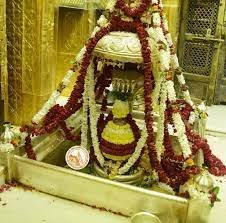
- Legend of Manifestation: The Vishweshwara Jyotirlinga is associated with a legend where Shiva manifested as an infinite column of light (Jyotirlinga) to resolve a dispute between Brahma and Vishnu over their supremacy.
- Vishnu’s Boar Form: To trace the origin of the luminous column, Vishnu took the form of a boar (Varaha) and searched beneath the ground, while Brahma, transformed into a swan, explored the heavens, but both failed to identify its source.
- Brahma’s Deceit: Despite unsuccessful attempts, Brahma falsely claimed to have found the summit, while Vishnu, in humility, admitted his inability. Displeased with Brahma’s deceit, Shiva cut his fifth head and placed a curse upon him as punishment.
- Curse and Reverence: Brahma’s curse entailed a loss of reverence, while Vishnu, truthful in his admission, continued to be venerated alongside Shiva, with dedicated temples for eternity.
- Sacred Deity of Varanasi: Vishweshwara is revered as the sacred deity of Varanasi, holding the position of the king over all deities and inhabitants of the city and the extended Panchkosi circuit, spanning 50 miles.
- Penalty for Deception: The legend underscores the importance of truthfulness, as Brahma’s deceit led to a significant penalty, highlighting the ethical dimensions within Hindu mythology.
- Shiva’s Infinite Radiance: The manifestation of Shiva as an infinite column of light symbolizes his omnipresence and transcendent nature, emphasizing his supremacy over the cosmos.
- Cultural and Religious Significance: The story not only contributes to the religious significance of Vishweshwara Jyotirlinga but also imparts moral and ethical lessons, reflecting the rich tapestry of Hindu mythology and philosophy.
| Transportation Options | |
| Air Transportation | The city of Benaras is accessible by air through an international airport situated approximately 22 kilometers from the city center. |
| Railway Stations | Varanasi Cantonment Station and Kashi Railway Station serve the city, facilitating convenient travel by train. |
| Bus Terminals | Benaras features two bus terminals – one at Cantt and another at Golgadda, commonly known as Kashi Depot. The Cantt terminal manages buses for both depots. |
| Urban Transportation System | The urban transportation system comprises diverse modes of vehicles, with two-wheelers (34%), autos (20%), cycles (16%), pedestrians (14%), four-wheelers (6%), cycle rickshaws (6%), and other miscellaneous vehicles (4%). |
| Accommodation Options | Various accommodation options are available, including dharmshalas, paying guest rooms, hotels, and lodges, catering to different budgets. Additionally, the Shri Kashi Vishwanath Temple Trust operates a guest house. |
9. Trimbakeshwar, Maharashtra:
Nestled in the Brahmagiri Hills, Trimbakeshwar Jyotirlinga is renowned for its extraordinary three-faced linga, symbolizing Lord Shiva’s aspects as Brahma, Vishnu, and Maheshwara.
- Religious Significance: Shri Trimbakeshwar is a prominent religious center housing one of the twelve Jyotirlingas, considered highly sacred in Hindu mythology.
- Unique Jyotirlinga Feature: The Jyotirlinga at this site is distinctive for having three faces, representing the Hindu Trinity – Brahma, Vishnu, and Shiva, showcasing their divine unity.
- Symbolic Erosion: The Linga at Trimbakeshwar has started to erode due to excessive water usage, symbolizing the transient and eroding nature of human society, conveying a profound spiritual message.
- Jeweled Crown and Gold Mask: The Lingas are adorned with a jeweled crown placed over the Gold Mask of Trideva (Brahma, Vishnu, Shiva), believed to date back to the age of the Pandavas. The crown features diamonds, emeralds, and various precious stones.
- Display of Crown: The crown is showcased every Monday from 4-5 pm, dedicated to Shiva, offering devotees an opportunity to witness the magnificent and ancient artifact.
- Architectural Marvel: The entire black stone temple, located at the foothills of Brahmagiri mountain, is renowned for its captivating architecture and intricate sculptures. Additionally, the Brahmagiri mountain is the source of the Godavari River, with three distinct origins.
| Connectivity Information | |
| Temple Location | Shri Trimbakeshwar Shiva Temple |
| Distance from Nashik | 30 kilometers (by road) |
| Distance from Thane | 157 kilometers (by road) |
| Recommended Mode of Travel | Best way to reach is by road |
| Closest Railway Station | Nashik Road Railway Station |
| Railway Station Distance from Temple | 39 kilometers (by road) |

10. Vaidyanath, Jharkhand:
Also known as Vaidyanath Dham, this Jyotirlinga in Deoghar is associated with healing powers. Devotees believe that worshiping here can bring solace and alleviate ailments.
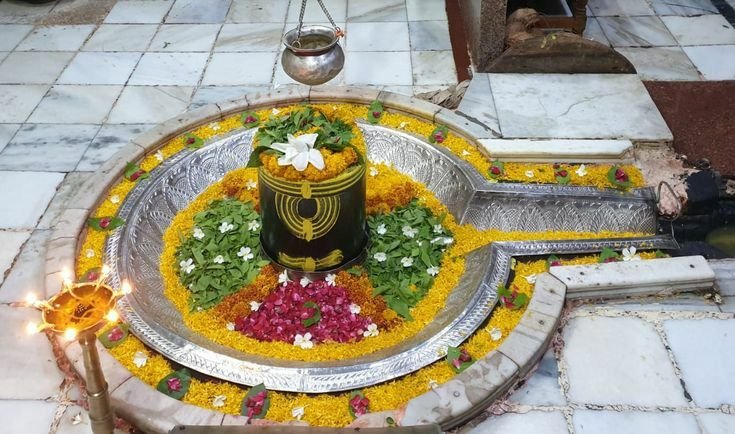
11. Rameshwar, Tamil Nadu:
Rameshwar Jyotirlinga, situated on the island of Rameswaram, holds immense significance. Pilgrims visit to seek redemption and perform ancestral rituals.
- Ramayana Connection: According to the Hindu epic Ramayana, Rama, the seventh avatar of Vishnu, prayed at the Rameswaram Shiva Temple seeking absolution for any sins incurred during his war against demon-king Ravana in Sri Lanka.
- Purpose of Installation: Following the advice of sages, Rama, along with Sita and Lakshmana, installed and worshiped a lingam (a symbolic representation of Shiva) here to expiate the sin of Brahmahatya, committed during the killing of Ravana, who was a Brahmin and son of Vishrava.
- Hanuman’s Role: To facilitate the worship, Rama instructed Hanuman, his trusted lieutenant and an avatar of Shiva, to bring a lingam from the Himalayas. Due to the time it took, Sita is believed to have built a lingam from sand at the nearby seashore, now present in the temple sanctum.
- Support from Ramayana: The original Ramayana authored by Valmiki, specifically mentioned in the Yudha Kanda section, well-supports the account, reinforcing the historical and scriptural basis of the temple’s origin.
- Alternative Version: Another version, as mentioned in Adhyatma Ramayana, states that Rama installed the lingam even before constructing the bridge to Lanka, providing an alternate perspective on the temple’s origin.
- Symbolism of Lingam: The lingam in the temple symbolizes the sanctification of Rama’s actions and the expiation of sins, embodying the spiritual significance of the temple.
- Historical and Scriptural Significance: Rama and Sita’s reverence and devotion, along with Hanuman’s integral role in facilitating the worship of Shiva, showcase the historical and scriptural importance of the Rameswaram Shiva Temple.
| Mode of Travel | Nearest Hub | Connectivity Details | Travel Time |
| By Air | Madurai Airport | Rameswaram is conveniently accessible from Madurai Airport, located 171 kilometers away. Buses and taxis operate regularly, providing a journey time of approximately four hours. | Approximately 4 hours |
| By Rail | Rameswaram Railway Station | Rameswaram has its own well-connected railway station linking to major cities in South India, including Madurai, Chennai, Puducherry, Coimbatore, and Bangalore. Express trains run regularly for passenger convenience. | Connected to various cities in South India |
| By Road | Rameswaram Bus Stand | Rameswaram boasts a major bus stand with regular services from cities such as Chennai, Madurai, Puducherry, Trichy, and Coimbatore. The well-maintained road conditions make a road trip to Rameswaram a convenient and enjoyable option. | Well-connected with buses from multiple cities |
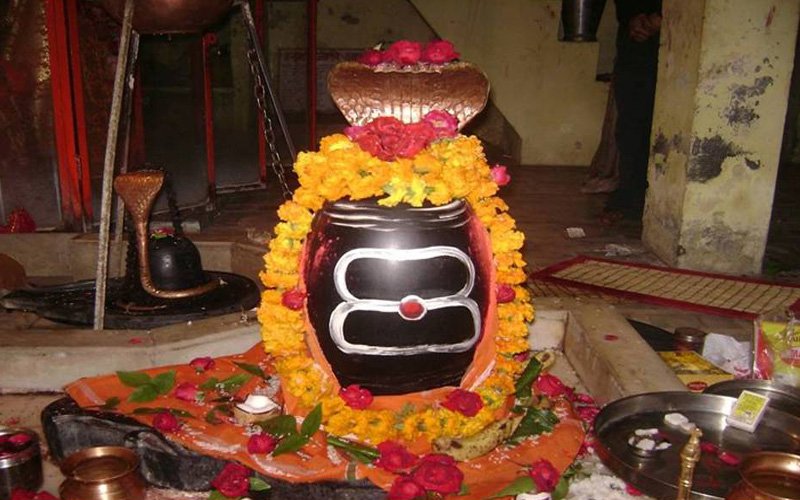
12. Grishneshwar, Maharashtra
Grishneshwar Jyotirlinga is one of the twelve Jyotirlingas, sacred Hindu shrines dedicated to Lord Shiva. Located in Dodkar Valley in Deccan Plateau, Maharashtra, India. Grishneshwar Jyotirlinga is the largest and last of the twelve Jyotirlingas and is considered a symbol of Shiva’s omnipotence. A lush green forest surrounds the Jyotirlinga, and ancient architecture marvels define the Shiva temple.
Architectural Features: The Grishneshwar Jyotirlinga Mandir is constructed with black stone, covering a sprawling 44,000 sq ft area. The temple is adorned with intricate sculptures and fine designs on both its interior and exterior walls.
Sacred Elements: Within the Garbhgruh (sanctum sanctorum) of the temple, a Jyotirlinga murti is enshrined. Additionally, a large statue of Nandi, the devoted Bhakt of Lord Shiva, is prominently positioned in front of the main entrance, adding to the sacred ambiance of the temple.
| Temple Information | |
| Name | Grishneshwar Jyotirlinga Mandir |
| Location | Verul village, Sambhajinagar district, Maharashtra |
| Deity | Lord Shiva |
| Type | Jyotirlinga Mandir |
| Connectivity Information | |
| Nearest Airport | Chatrapati Sambhajinagar |
| Airport Location | Located in Sambhajinagar district, Maharashtra, India |
| Nearest Railway Station | Aurangabad |
The 12 jyotirlingas have unique heavenly stories of Lord Shiva and the histories of the temples. Rudrabhisek, Laghu Rudrabhishek and Shiva Aartis are recited in the morning, noon and evening at all the Jyotirlingas. They have their religious and holy significance. Devotees from all around the world have their faiths in the Jyotirlingas.
How many idols in Ram Mandir?
